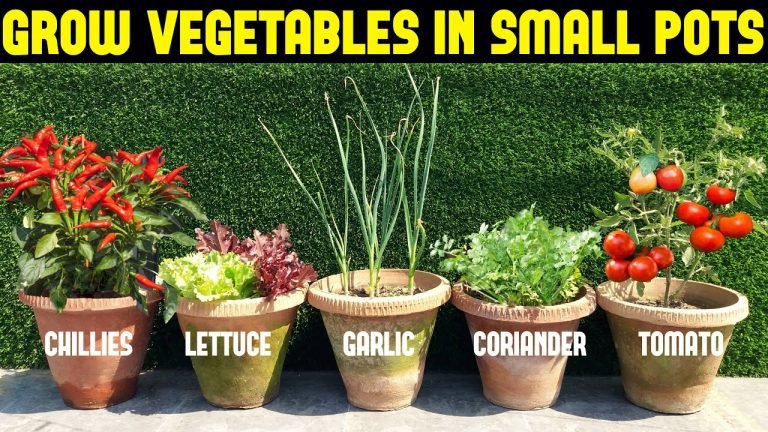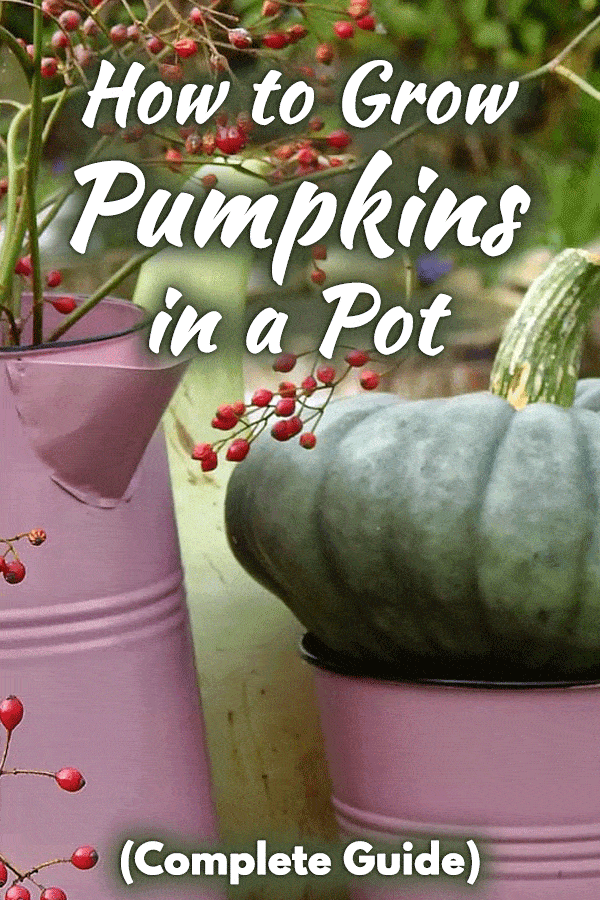how to grow rhubarb in a pot – [Beginners Guide]
Rhubarb is a sweet and tangy vegetable that is often used in pies and crumbles. It’s not only delicious, but it’s also very easy to grow! If you have a small garden or just a sunny patio, you can grow rhubarb in a pot.
Growing rhubarb in a pot is a great idea for a number of reasons. Firstly, it saves space. If you live in a small apartment or have limited outdoor space, a pot is the perfect solution for growing this plant. Secondly, it’s easy to care for. Rhubarb is a low maintenance plant that does well in pots. Finally, it’s very rewarding. Growing your own produce is a wonderful feeling and rhubarb is a great place to start.
I’ve been growing rhubarb in pots for the past few years and it’s been a wonderful experience. Every spring, I get to enjoy fresh and juicy stalks of this delicious vegetable. Not to mention, it’s a great conversation starter when guests come over and see my little herb garden.
In this guide, I’ll show you how to grow rhubarb in a pot and give you some tips and tricks that I’ve learned along the way. Let’s get started!
Pot or container selection
To grow rhubarb at home in a pot, you’ll need a large and deep container. Rhubarb is a vigorous plant that needs plenty of room to grow its roots. A pot that is at least 12 inches wide and 12 inches deep is ideal.
When choosing a pot, make sure it is made of a durable and non-toxic material. Terracotta and plastic pots are both good options. If you live in an area with hot summers, consider choosing a lighter-colored pot, as dark-colored pots can get too hot and dry out the soil.
It is also important to choose a pot with sufficient drainage holes in the bottom to prevent water from pooling in the soil and causing root rot. Make sure the holes are not too large, as you don’t want soil to escape from the pot.
In summary, choose a large and deep pot made of durable and non-toxic material with sufficient drainage holes for optimal growth of rhubarb at home.
Make suitable soil mix
Rhubarb plants need well-draining soil that is rich in organic matter to grow well. A soil mix that is 50% garden soil, 25% compost, and 25% sand or perlite is ideal.
The garden soil provides a good structure for the roots to grow, the compost adds vital nutrients, and the sand or perlite helps improve the drainage of the soil mix.
pH level of the soil is also important for optimal growth. Rhubarb prefers slightly acidic soil with a pH level between 5.5 and 6.5. You can test the pH level of your soil with a soil testing kit, which is readily available at most garden centers.
It is important to use a high-quality soil mix for growing rhubarb in a pot, as the plant will be relying on this soil for its entire life. By using the correct soil mix, you will ensure healthy growth and productive harvests.
How to plant the rhubarb?
Planting rhubarb in a pot at home is a straightforward process and can be done with these simple steps:
- Choose a large and deep pot with sufficient drainage holes and fill it with a well-draining soil mix (50% garden soil, 25% compost, 25% sand or perlite).
- Select a healthy rhubarb crown and carefully remove it from its original pot, taking care not to damage the roots.
- Place the crown in the center of the pot, spreading the roots out evenly in the soil.
- Fill in around the crown with soil, tamping it down gently. The crown should be covered with 2-3 inches of soil.
- Water the pot thoroughly, until water runs out of the drainage holes.
- Place the pot in a sunny location, such as a patio or windowsill, and keep the soil evenly moist but not waterlogged.
Note: It is important to let the crown settle into its new pot for a few weeks before harvesting any stalks. Wait until the following year to harvest, to allow the plant to become established.
By following these simple steps, you will have a thriving rhubarb plant in no time! Enjoy the sweet and tangy stalks for years to come.
How to care for rhubarb?
Watering Requirements
Rhubarb plants need consistent and even moisture to grow well. Water the plant deeply, making sure the soil is thoroughly moist, but not waterlogged. In hot weather, you may need to water more frequently, while in cooler weather, you may need to water less.
Avoid getting water on the leaves of the plant, as this can encourage fungal growth. Water the plant at the base of the stem, rather than overhead.
Fertilizer Requirements
Rhubarb plants benefit from regular fertilization, especially if you are growing it in a pot. Use a balanced, all-purpose fertilizer, such as 10-10-10, and follow the package instructions for application.
Fertilize the plant every 4-6 weeks during the growing season (spring and early summer) and reduce the frequency of fertilization in late summer and fall.
Sunlight Needs
Rhubarb plants need full sun to grow well and produce the most flavorful stalks. Place the pot in a location that receives at least 6 hours of direct sun each day.
In areas with hot summers, you may need to provide some shade during the hottest part of the day, to protect the plant from sunburn.
Pruning & Training
Rhubarb plants can become quite large, so regular pruning is important to keep the plant healthy and productive.
Cut off the flowering stalks as they appear, as this will redirect the plant’s energy into growing leaves and roots. In late fall, after the leaves have yellowed and died back, cut the stalks down to ground level.
Other Care
To keep your rhubarb plant healthy and productive, it is important to provide it with adequate drainage and to keep the soil consistently moist but not waterlogged.
In addition, remove any yellowing or dead leaves as they appear to reduce the risk of fungal growth and keep the plant looking its best.
By following these simple care tips, you can enjoy delicious and healthy rhubarb from your own pot for years to come.
Common problems
Pests and Insects
Common pests and insects that can attack rhubarb grown in a pot at home include aphids, slugs, and cutworms.
Aphids can be controlled with an insecticidal soap spray, or by blasting them off the plant with a strong jet of water.
Slugs can be controlled by placing copper strips around the base of the pot, or by setting out slug traps made of overturned grapefruit halves.
Cutworms can be controlled by placing a protective collar around the stem of the plant.
Diseases
Common diseases that can affect rhubarb grown in a pot at home include leaf spot, crown rot, and verticillium wilt.
Leaf spot is a fungal disease that causes yellow or brown spots on the leaves of the plant. To prevent this disease, keep the leaves dry and remove any yellowing or dead leaves as they appear.
Crown rot is a fungal disease that can occur if the soil in the pot does not drain well, or if the plant is overwatered. To prevent crown rot, provide adequate drainage and do not allow the soil to become waterlogged.
Verticillium wilt is a fungal disease that causes the leaves of the plant to wilt and yellow. There is no cure for verticillium wilt, but the plant can be kept healthy by providing adequate sunlight, water, and nutrients, and by removing any yellowing or dead leaves as they appear.
Poor Production
Rhubarb grown in a pot at home may produce fewer stalks than rhubarb grown in the ground, but with proper care and maintenance, it can still be a productive plant.
To ensure optimal production, make sure the plant receives adequate sun, water, and nutrients, and remove any yellowing or dead leaves as they appear.
Other Issues
Other issues that can affect rhubarb grown in a pot at home include stunted growth, yellowing leaves, and poor root development.
Stunted growth can be caused by a lack of sun, water, or nutrients, or by an overly large pot that doesn’t allow the roots to spread out and develop properly.
Yellowing leaves can be caused by a variety of issues, including a lack of sun, water, or nutrients, or by disease.
Poor root development can be caused by an overly large pot, poor soil quality, or a lack of proper drainage.
By understanding these common problems and taking steps to prevent them, you can ensure that your rhubarb plant grows strong and produces an abundance of delicious stalks.
Harvesting & storing homegrown rhubarb
Harvesting Rhubarb
- Rhubarb is usually ready to harvest in late spring to early summer, usually around 2-3 years after planting.
- To harvest, gently pull on the stalk to separate it from the plant.
- It is best to wait until the stalks are at least 12-18 inches long and at least 1 inch in diameter.
- Avoid harvesting all the stalks at once to prevent stress to the plant.
- Instead, choose 2-3 stalks from each plant and leave the rest to continue growing.
Storing Rhubarb
- Rhubarb should be stored in a cool place, ideally between 32-40°F.
- Wrap the stalks in plastic wrap or place them in a plastic bag with a damp cloth.
- Rhubarb will last up to 2 weeks when stored properly.
- If you are not going to use the rhubarb immediately, you can freeze it for later use.
- To freeze, wash and chop the stalks, then spread them on a baking sheet and freeze until solid.
- Once frozen, transfer the pieces to an airtight container or freezer bag for long-term storage.
Growing rhubarb in container – Conclusion
Conclusion
Rhubarb is a delicious and versatile vegetable that can be grown in a pot with ease. By following the steps outlined in this guide, you can enjoy a bountiful harvest of fresh rhubarb in no time.
Some key takeaways from this guide include:
- Choose a large, deep pot with good drainage to grow rhubarb.
- Plant rhubarb in well-draining soil, and place the pot in a sunny location.
- Water rhubarb regularly, but be sure not to over-water to prevent root rot.
- Fertilize rhubarb with compost or a balanced fertilizer to promote healthy growth.
By following these tips, you can successfully grow healthy and delicious rhubarb in a pot. So, go ahead and give it a try! Not only will you have the satisfaction of growing your own food, but you’ll also be able to enjoy fresh rhubarb in your cooking and baking all season long.







